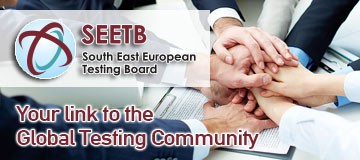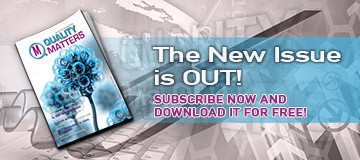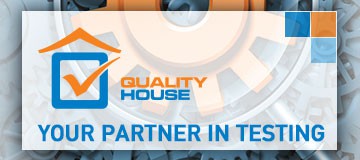
Jeroen Rosink
Squerist, NetherlandsJeroen is a passionate test professional with about 19 years of experience in testing, test management and executing, coordinating, coaching and advising roles. He gave training and workshops internally in the company, Squerist, as well as externally. Driven by his passion he always search for those things that make our occupation valuable and interesting.
Besides presenting several times on the Dutch TestNet conferences and SeeTest 2017, he also made his contributions to an anniversary book of TestNet “Set your course: Future and trends in testing” (translated from Dutch) and the book “How to reduce the cost of software testing”.
A change to people-oriented test management
The world of Software testing is constantly changing. Testing in Agile and DevOps is different than testing in traditional environments. Everything has to be faster and better. This presentation is about an implementation of people focussed test management at a big international financial service provider.
Referring to the statement ‘Individuals and interactions over processes and tools’ is often made. Rarely done. Based on own experience how this process of change is implemented is explained. The understanding of Tuckman's model of group dynamics is introduced with examples. This helped to transform the structure of testing from theory based to human based approach. The value of individuals improved from action driven testing to taking ownership.
There are lots of theories written on how to deal with this kind of change. Experience is rarely spread. Here there is an opportunity to go into some level of detail with room for interaction to discuss these changes in common-place situations.

Anton Angelov
Automate The Planet Ltd, BulgariaHis name is Anton Angelov, co-founder and CTO of Automate The Planet Ltd. With more than eight years of experience in the field of test automation, he helps people write high-quality and maintainable test automation. Automation testing and designing test harness and tools are passions of his, having the best industry development practices in mind. Furthermore, Anton is an active blogger and international speaker. He was nominated for best QA in Bulgaria in 2017 and 2018 (and won).
Infinite Improbability Testing- Execute All Tests in Parallel
Speed up your UI tests execution 10+ times. See a LIVE demo how it works. Through surveys, Anton’s team discovered that many companies desire to utilize the benefits from parallel tests execution to optimize their software development process. However, they struggle with the process. Lack of available tooling, documentation, tests data arrangement/deletion, handling E2E tests specifics like browsers, emulators, etc. Anton’s Automate the Planet was one of these companies. Because of that, they created an open-source tool for the job. Throughout the presentation, you will find statistics where, depending on the type of the tests, the tests execution can speed up from 4-40 times, which makes possible the run of the 100000 integration tests or 3000+ UI tests under 20 minutes.
In addition, you will find example solutions to most of the common challenges in executing tests in parallel.Anton believes that in the near future the parallel tests execution will be a necessity, much like unit tests or continuous integration now. This will be one of the pillars for the companies to improve their competitiveness and effectiveness.

Marija Neskovic
CallidusCloud, SerbiaShe is a fighter, discoverer in search of knowledge, mathematician, gardener, composter, yoga enthusiast. Performance tester for the past three years with an eye for issues and a love for problem solving. She believes that there is always a place for improvement. Enjoys exploring possibilities behind the performance and optimizing the process to make it simpler and better.
Discoveries behind performance
In the world of tests, performance comes as a hidden gem. Discovering the possibilities of that hidden gem is the road we should dare to take. This presentation aims to bring us closer to understanding performance test results that can improve what we do. We will go through the most used tools for interpretation of performance tests, their pros and cons, and do some troubleshooting of results presented in these tools. After this session you will have discovered a gem and you will just need to be brave enough to use most of it.

Marcin Sikorski
Tieto, PolandIoT and Proptech specialist professionally verifying Smart Industry Products. By day -Test Lead working as a tester since 2013. By night - an enthusiast of optimization, China, climbing, public speaking and culture pulp.
Internet of Things – a tsunami that will kill testers
Internet of Things – a futuristic future of tomorrow now, more than ever since, is getting closer to testers with its’ destructive force. It blows away everyone living in the technological past, raising, at the same time, question – is there any way to control it?
A presentation in which you will begin your journey with IoT and discover the beauty of its ecosystem. Better now than ever :) All of that from the perspective of being both a tester and a consumer.

Ellinor Kwok & Thomas Carpentier
Genymobile, FranceEllinor is a Pre-sales engineer at Genymobile. She helps clients improve their testing strategy and speed up their tests using Genymotion Cloud Android virtual devices. She has met many clients with different profiles: beginning to switch from manual to automated testing, or already experienced with automated testing. Ellinor is quite familiar with the way they run their tests and configure their testing environment. She is French with Chinese and Malaysian origins and has already given talks a long time ago on Android cooking. Not surprisingly, she loves pandas!
Thomas says he’s almost an ‘old tester’, as he started working in QA 12 years ago. After learning and becoming more experienced, he is now a QA Manager. He is in charge of deciding about testing strategy for his company’s software and improving its test automation.
During those 12 years, he’s had the chance to work on Desktop, Web and Mobile applications and everytime, I had to tackle challenges :
-OS, browsers & mobile fragmentation
-Running thousands of tests which can be very long if not optimized.
And lastly, he is a French man with a beard (but not a hipster).
The power of parallel testing to speed up your tests and enjoy a coffee break
Do you run your tests and after several coffees, you finally get the results?
Ellinor and Thomas lived it and it's time to change! In one command line, they run mobile automated tests using Appium testing framework on Genymotion Cloud Android emulators.
You'll see how to, while drinking one ristretto, do test sharding by splitting a set of tests and running them on several emulators simultaneously.
If you prefer American coffee, no problem! Achieve a broader testing coverage by running the same tests on different emulators simultaneously.
Not an Android tester? Don't worry, best practices apply to all automation solutions.
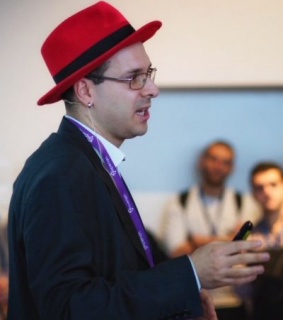
Alexander Todorov
Red Hat, BulgariaAlex is a Senior QA engineer at Red Hat with more than 10 years of experience. He tests anything and everything open source and is an author and maintainer of many open source projects. His favorite programming language is Python!
How everyday testing can help your security
Delivering secure software products is part of our daily jobs. This presentation
will focus on where and how we can focus our energy as developers and QA
engineers to improve product security without going into full-on penetration
testing mode. Alexander is going to look at software, infrastructure and people and talk about tools and techniques that can be used even by less experienced team members. All of this will be nicely peppered with examples where things went the wrong way.

Aleksandar Ristic
Comtrade Digital Services, IrelandAs a Testing Consultant at Comtrade, Aleksandar is in charge of leading a testing team of 40+ people in 7 cities across 4 countries, and delivering testing and quality assurance services to the company’s clients.
Over the last 15 years, he has held a number of positions, including Test Engineer, Test Automation Engineer and Test Manager, and has worked with clients from various industries – storage, telecommunications, gaming, education, travel and public sector. He is very passionate about testing, finding and submitting bugs, as well as analysing problems and finding new ways to break software under testing. He’s constantly working on identifying new tools and technologies that can help him and his team deliver better software to their clients.
Agile Transformation Guide for Test Engineers
Aleksandar’s presentation is meant to be a guide for Test Engineers in Agile Transformation. He will explain different challenges that they must overcome to have a successful testing team in Agile environment (such as lack of communication, lack of a testing team in the Agile environment, setting the right amount of test automation and using it to achieve Continuous Integration/Continuous Development, gathering information about what to test, how to choose the right tool for test automation, etc.).
This presentation will be backed by a book in a pdf format that will be available for all attendees. In addition there will be a small SF story involving Testing, AI and bugs!
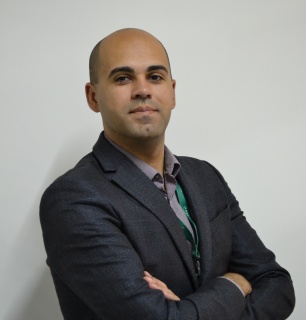
Gjore Zaharchev
Seavus, MacedoniaGjore Zaharchev is an Agile evangelist and fighter for heuristic testing. With more than 10 years’ experience in Automated and Manual Software testing in various domains, he sees the tester as a person with a mix of various problem solving skills and an engineering mindset. He believes that Software Testers are not just numbers for the clients.
Reinvented Regression testing
So many teams are abandoning regression testing in the agile era since it requires too much time. Usually they use the ‘retest all’ technique and their testing efforts are increased in each iteration. The biggest question is:is there a correct way? Gjore is not quite sure about that but definitely knows a more useful approach.
Reinvent testing by introducing fresh Ideas and changes so you avoid the well known "pesticide paradox". Reduce the timeused for testing and speed up the time to market.

Milena Lazarevic & Dejan Nikolic
Invenda Solutions, SerbiaMilena is head of testing in a young software development company called Invenda based in Novi Sad. After completing a Master’s degree in Mathematics at the University of Belgrade in 2012, she started testing various vending and transportation software products for international clients through a Serbian consulting company. She has experience in the ticket vending industry, where she has been using multiple approaches to test complex mixtures of hardware and software. Searching for new challenges and excitement, she joined some of her former vending colleagues at Invenda where testing is an integral part of the R&D process in building a product.
For Dejan, quality is never a coincidence, but the end goal and primary expectation of software testing. Consulting for 4 years, Dejan developed and implemented testing strategies for government and institutional clients in the transportation sector, with a focus on ticket vending and mobile applications. Through his career, Dejan kept both feet in manual testing and automatization, developing testing approaches used across multiple software and hardware solutions. Dejan's main passion is context- driven testing and the funky and challenging intellectual process which comes with good software testing. Dejan completed a Master's degree in Computer and Economic science at the University of Novi Sad in 2015.
Challenges of testing complex IoT systems and devices
IoT has been a buzzword for a few years already. In order to test the hardware and software included in the IoT system, there are a lot of challenges. The knowledge and mindset which testers must have to answer them can vary from the constant improvement of understanding the hardware parts itself to thinking about the end user’s behavior on several levels.
Milena and Dejan will share with you their experience of testing the smart vending machines as an IoT device. They will give you real-life examples and share their story. Join this presentation to find out how to overcome those challenges of testing big complex IoT devices.
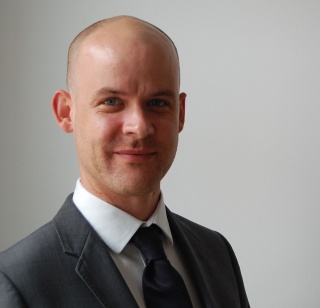
Ingo Philipp
Tricentis, AustriaIngo Philipp is on the product management team at Tricentis. In this role his responsibilities range from product development and product marketing to test management, test conception, test design, and test automation. His experiences with software testing embrace the application of agile as well as classical testing methodologies in various sectors including financial services, consumer goods, commercial services, healthcare, materials, telecommunications, and energy.
Reality Check: The Role of Manual Testing in DevOps
With the growing pressure of digital disruption, enterprises find themselves facing the need for speed—and change. DevOps has emerged to enable this change and help speed up time to market and cross-team collaboration. As a result, DevOps has transformed how we test and our daily testing routines. But what does this mean for manual testing? Have you made the decision to use it or lose it?

Benedikt Woerner & Katharina Warak
MaibornWolff GmbH, GermanyHe is currently working as an agile test expert and team leader for the software test department in the consulting house MaibornWolff GmbH in Munich. His passion is helping the company’s clients in the agile transformation of their view on testing. He’s opening new ways and perspectives for their customers, and one of these is collaborative testing methods. From his point of view, human driven testing is also important in an agile project and collaborative testing methods help to involve all the stakeholders.
She is currently working as an agile tester for manual and automated testing at MaibornWolff GmbH. Katharina worked on collaborative test methods in her master thesis last year. Now she helps MaibornWolff GmbH’s customers to learn more about the collaborative way of human testing and use these methods to improve their way of working.
The Knowledge of Groups - A Practical Conversation on Collaborative Testing Methods
In their projects Katharina and Benedikt use various collaborative testing methods. You can use these methods to involve different stakeholders.
A bug bash is a competition with a party atmosphere where people have to find as many bugs as they can. In pair testing, one person shares test ideas that the other actions on. Mob testing unites a group of people with different specializations to test software together in a structured way.
They use collaborative testing methods e.g. to improve communication, reduce knowledge silos and to have different perspectives on the system under test.

Gerie Owen & Peter Varhol
QualiTest, Technology Strategy Research, USAGerie Owen is Vice President, Knowledge and Innovation-US at QualiTest Group, Inc. She is a Certified Scrum Master, Conference Presenter and Author on technology and testing topics. She enjoys mentoring new QA Leads and brings a cohesive team approach to testing. Gerie is the author of many articles on technology and is currently developing a curriculum for DevOps training. Gerie can be reached through her website, www.gerieowen.com and her blog, Testing in the Trenches, is at https://testinggirl.wordpress.com/.
Peter Varhol is a well-known writer and speaker on software and technology topics, having authored dozens of articles and spoken at a number of industry conferences and webcasts. He has advanced degrees in computer science, applied mathematics, and psychology, and is the Managing Director at Technology Strategy Research. His past roles include technology journalist, software product manager, software developer, and university professor.
How Did I Miss That Bug: Managing Cognitive Bias in Testing
How Did I Miss That Bug? will give testers an understanding of how testers’ mindsets and cognitive biases influence their testing. Using principles from the social sciences such as Kahneman’s framework for critical thinking and Chabris and Simons’ findings on attention, perception and memory, this presentation will demonstrate the impact of cognitive bias on testing and improve your individual and test team results. We will discuss the balance between functional and exploratory testing in mitigating bias. Finally, it will provide tips for managing your biases and focusing your attention throughout the test process so you won’t miss that obvious bug.

Mirjana Kolarov
Levi9, SerbiaMirjana is co-founder of the first testing community in Serbia, called Test’RS Club. After gaining diverse experience in testing she concluded that she needs to give back to the community, so she started one as a platform for sharing knowledge. During the day she is a Test Architect and Department Manager at Levi Nine. But above all, she is a passionate and highly motivated software tester who loves getting her hands dirty with actual testing and leads by example, promoting appropriate testing skills and techniques for 9 years, and counting.
Balancing your test automation with exploratory testing
In Agile things are going very fast. We need test automation to speed us up, and to cover the regression testing. UI testing is not the only thing that needs to be automated, API should also be covered with tests. Even with this coverage, can we rely on test automation only? No. The common pitfall I see these days is trying to automate all, and not dedicating any (testing) time to other ways of testing. This is where exploratory testing comes to the spotlight – to find defects which are not covered with automation, and which can never be covered with scripts.
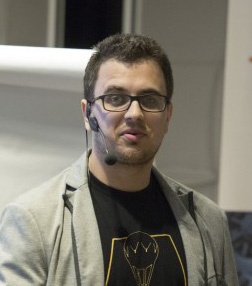
Maciej Wyrodek
Objectivity, Poland„I am part of that power which eternally wills evil and eternally works good” he says. Maciej is a tester specializing in Automation. Part of IT since 2011. He had the opportunity to work, among others, on projects for Dell, Volvo, Creditsafe, Jetshop, Kobo, Contium.
Since 2016 he’s trying to give more to the community by presenting at conferences, meetups and workshops. In his free time Maciej writes in his blog thebrokentest.com, where he aims to discuss different code smells in test automation.
Testing Lesson learned in customer support
How often did you wonder what happens after you release code to prod? How it affects customers? And what you can learn from it? Come with me and I will answer some of these questions!
In a Waterfall project, you can often hear that testers are the last people working on it. In Agile you won’t hear it so often because they will mention that the admin has work to do too. But usually, a lot of us forget about the real last line (or as they are called „First-line”) - the support. They are the ones dealing with a project long after we will forget about it. And they know our sins. Cause they have to deal with them.
During this presentation, I will tell you a story from the beginning of my career about working in support for a project I had tested. I will also show you why I think every tester should do it at least once in their life. And how knowing that there will always be a bug is different from experiencing it on your own.

Stefani Majić & Ema Božić
Span, CroatiaStefani is currently working as a Software Test Engineer in Span and has a large number of successfully completed projects. In her free time, she loves to explore and learn about Machine Learning, IoT and Automation. She also organizes and participates in various projects in her local community, and holds lectures and workshops where she tries to pass on her passion for technology.
Ema works as a Software Test Engineer at the company SPAN in Osijek. She has a master's degree in process computing but quality assurance started to be her passion two years ago when she applied for the SPAN student academy. Her main points of interest are test automation and the future of testing in general, as you can tell by the topic she will be presenting.
Future-Proof Yourself and Prepare for Blockchain
Thinking about the technology buzzwords of 2018, one we have all heard of is blockchain. In the times ahead protocols will become advanced and data points more dispersed, so network security will be a great concern. Blockchain technology with its theoretical immutability and robust security will become a key for successful implementations. Stefani and Ema’s goal is to introduce listeners with the usage of blockchain for creating applications and to show tools and techniques for testing it. They will provide a demo to show how blockchain works and how it is used in real-life. Come future-proof yourself and prepare for blockchain!

